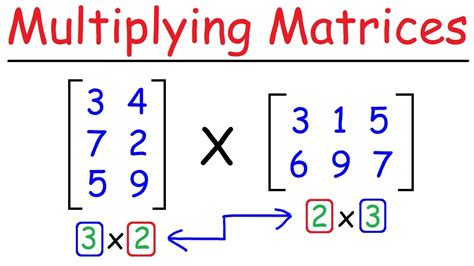How To Do Matrix Multiplication: A Step-by-Step Guide
Matrix multiplication might seem daunting at first, but with a clear understanding of the process, it becomes manageable. This guide breaks down matrix multiplication into easy-to-follow steps, equipping you with the skills to perform this fundamental linear algebra operation. We'll cover the basics, common pitfalls, and provide examples to solidify your understanding.
Understanding the Basics of Matrix Multiplication
Before diving into the mechanics, let's clarify some fundamental concepts. A matrix is a rectangular array of numbers, symbols, or expressions, arranged in rows and columns. The dimensions of a matrix are described as m x n, where 'm' represents the number of rows and 'n' represents the number of columns.
Crucial Point: Matrix multiplication isn't simply multiplying corresponding elements. The process involves a specific set of rules ensuring the resulting matrix is mathematically consistent.
The Compatibility Rule: A Key Requirement
Not all matrices can be multiplied together. For matrix multiplication to be possible, the number of columns in the first matrix must equal the number of rows in the second matrix. If this condition isn't met, the multiplication is undefined.
For example:
- A 2 x 3 matrix can be multiplied by a 3 x 2 matrix.
- A 3 x 2 matrix cannot be multiplied by a 2 x 3 matrix (unless you perform the multiplication in the reverse order).
Step-by-Step Guide to Matrix Multiplication
Let's illustrate the process with an example. Suppose we have two matrices:
Matrix A:
[ 1 2 ]
[ 3 4 ]
Matrix B:
[ 5 6 ]
[ 7 8 ]
Both are 2 x 2 matrices, so multiplication is possible. The resulting matrix will also be a 2 x 2 matrix.
Steps:
-
Element-wise Dot Product: To find the element in the first row and first column of the resulting matrix (let's call it Matrix C), we take the dot product of the first row of Matrix A and the first column of Matrix B. The dot product is calculated by multiplying corresponding elements and summing the results:
(1 * 5) + (2 * 7) = 19
This becomes the element C<sub>11</sub> (first row, first column) of Matrix C.
-
Repeat for Other Elements: We repeat this process for each element in Matrix C.
- C<sub>12</sub> (first row, second column): (1 * 6) + (2 * 8) = 22
- C<sub>21</sub> (second row, first column): (3 * 5) + (4 * 7) = 43
- C<sub>22</sub> (second row, second column): (3 * 6) + (4 * 8) = 50
-
Construct the Resulting Matrix: Combine the calculated elements to form Matrix C:
Matrix C:
[ 19 22 ]
[ 43 50 ]
Common Mistakes to Avoid
- Ignoring the Compatibility Rule: This is the most frequent error. Always verify that the number of columns in the first matrix equals the number of rows in the second.
- Incorrect Dot Product Calculation: Double-check your multiplication and addition in each dot product calculation.
- Misplacing Elements in the Resulting Matrix: Ensure you correctly position each calculated element in the resulting matrix based on its row and column index.
Practicing Matrix Multiplication
The best way to master matrix multiplication is through practice. Try working through various examples with different matrix sizes. You can find numerous online resources and practice problems to help hone your skills. Remember, understanding the underlying principles and following the steps systematically will lead to success.
